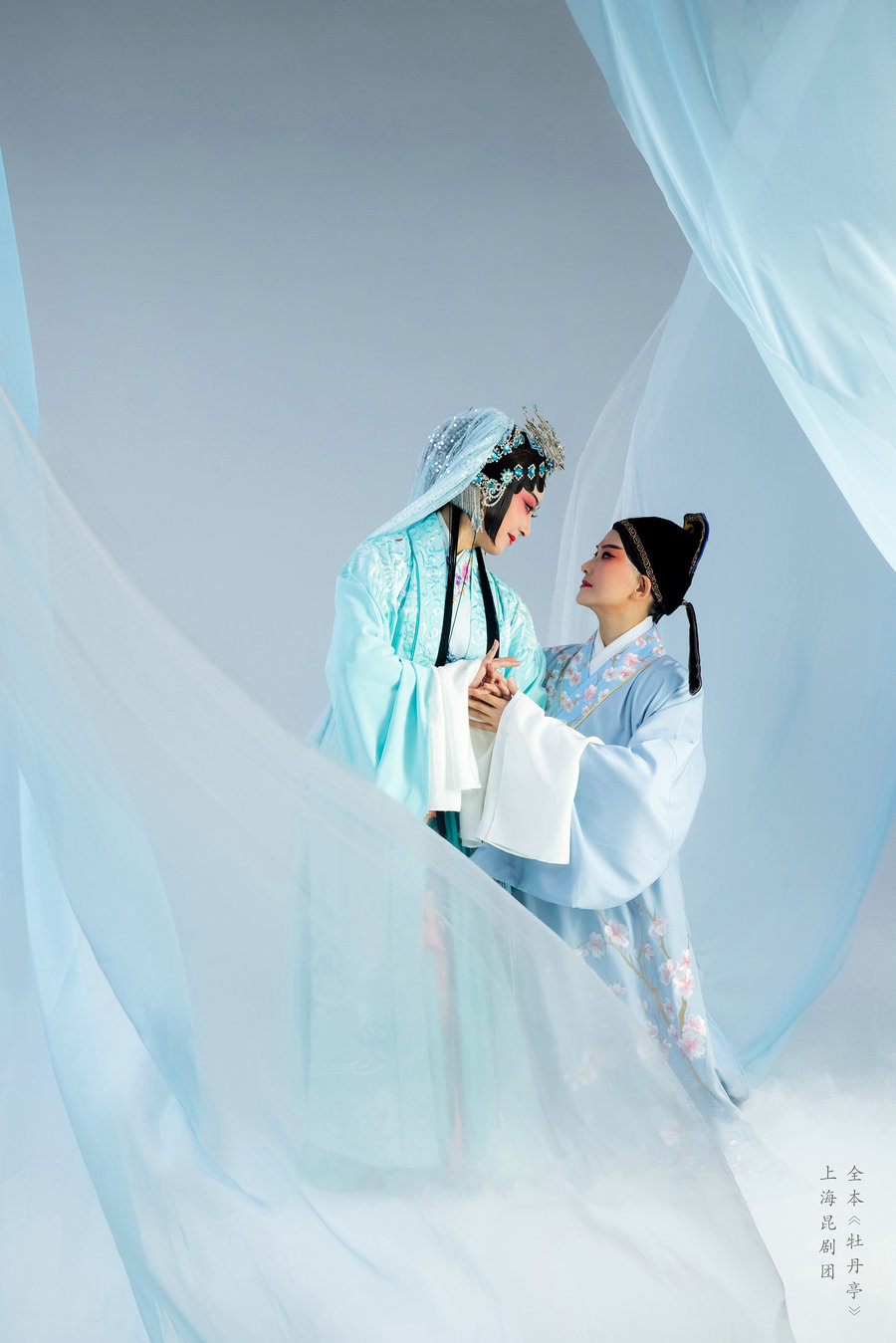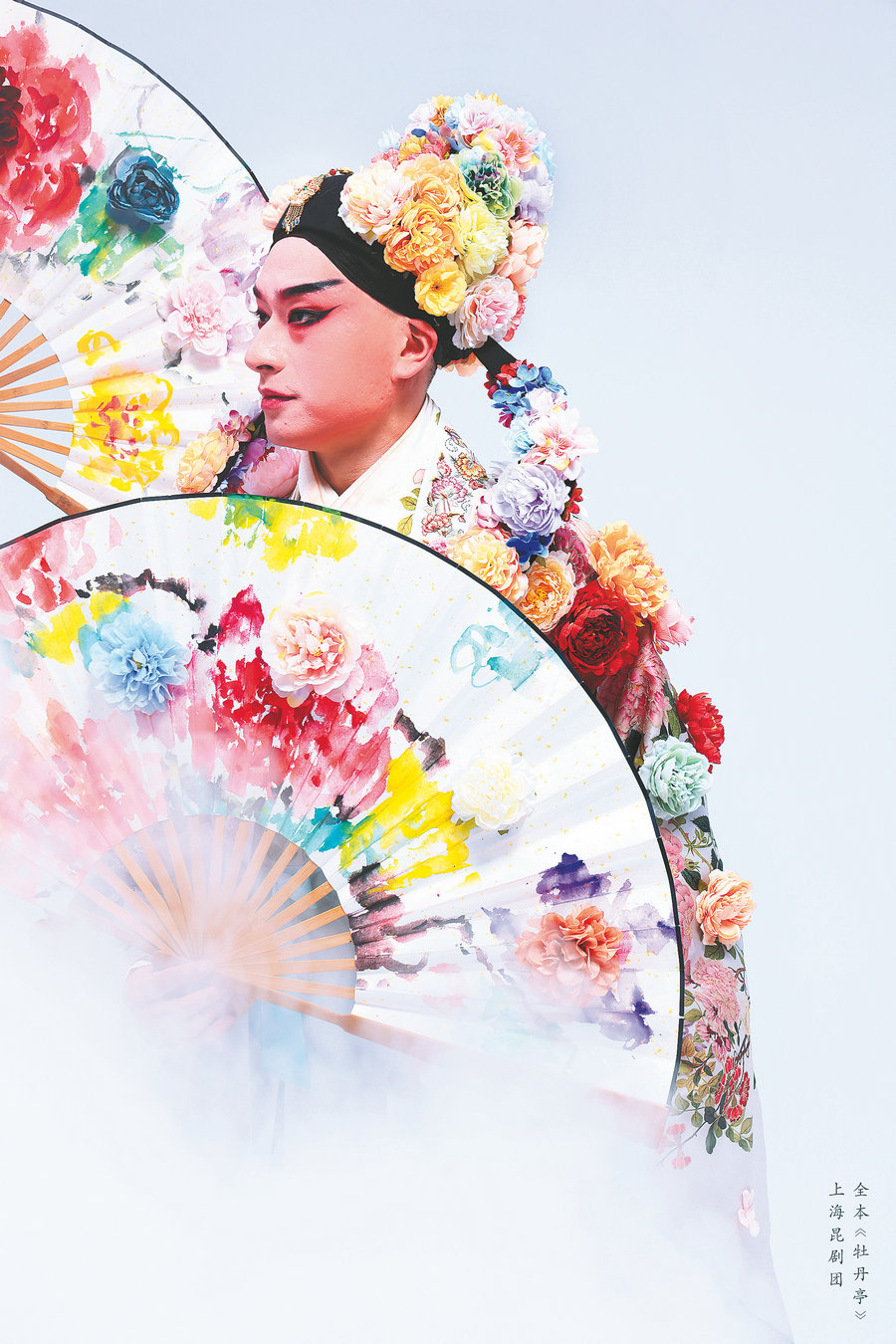Kunqu comes alive
In 2001, when Kunqu Opera was listed as one of the masterpieces of the oral and intangible heritage of humanity by UNESCO, Yang Fengyi, artistic director and head of the Northern Kunqu Opera Theater, traveled with her performers to the UNESCO headquarters in Paris to witness the historic moment.
They demonstrated the ancient art form through a short performance. One of the actresses received a note from an audience member after the show, telling her how beautiful she was onstage and how beautiful Kunqu Opera was.
"It was a very meaningful gesture. Despite the language barrier and cultural differences, the audience appreciated the art form. Their feedback showed us that the art form, though about 600 years old, is still enjoyed by contemporary audiences," says Yang.
In 2008, UNESCO inscribed Kunqu Opera on the representative list of intangible cultural heritage of humanity.
One of the oldest traditional opera forms still performed in China, Kunqu Opera was born in the region of Kunshan in today's Suzhou, Jiangsu province. It has distinguished itself by the virtuosity of its rhythmic patterns and exerted a dominant influence on all the more recent forms of opera in China, such as Peking Opera.
Combining songs performed in the Suzhou dialect, graceful body movements, martial arts and dance, Kunqu Opera uses a seemingly endless variety of gestures to express specific emotions.
Like many traditional Chinese art forms, Kunqu Opera has faced competition from mass culture and a lack of interest among young people, but the recognition by UNESCO put Kunqu Opera in the international spotlight at the same time as it began to experience a domestic revival.

Youthful revival
"Of all the rich and diverse traditions of Chinese opera, Kunqu Opera is one of the most beautiful and best-known among Chinese audiences," says Fu Jin, a professor at the National Academy of Chinese Theater Arts. "It contains many aspects of traditional Chinese culture, such as philosophy, religion, social values and lifestyle."
Fu notes that Kunqu Opera pieces are closely linked with Chinese literature. For example, one of the best-known and most-performed pieces is The Peony Pavilion, which was written by Ming Dynasty (1368-1644) playwright Tang Xianzu, who is often compared to William Shakespeare.
What excites Fu is that Kunqu Opera has been attracting a growing young audience, who consider the art form to be deep, elegant and sophisticated.
A "youth version" of The Peony Pavilion, the fruit of a collaboration between Suzhou Kunqu Opera Theater and Chinese American writer Kenneth Hsien-yung Pai, is considered another major contributor to the development and revival of the art form.
The production premiered in 2003 and has since become a major phenomenon. With over 400 performances across the Chinese mainland, Hong Kong and Macao, as well as in countries such as Greece, the United Kingdom and the United States, it has been seen by a combined worldwide audience of about 800,000. Thanks to shows staged at universities across the country at that time, Kunqu Opera witnessed a surge in popularity, especially among young people.
"Since the beginning of the 21st century, Kunqu Opera had faced a decline, with veteran Kunqu Opera performers retiring, audiences getting old and fewer young people willing to learn and enjoy the old art," recalls 85-year-old Pai. "I am a big fan of Kunqu Opera and I was worried."
Pai says that the cast of the 2003 youth version of The Peony Pavilion was all in their early 20s and 70 percent of the audience were also young people. "That was a very promising sign, and I was very happy," he says.
This year, marking its 20th anniversary, the youth version — with 27 acts of the classic — will be staged at Beijing Tianqiao Performing Arts Center from April 18 to 20.

Growing fan base
A recent, marathon production of The Peony Pavilion by the Shanghai Kunqu Opera Troupe — 55 acts, spanning eight hours in total — has also made headlines. From March 8 to 10, the production was staged at the China National Opera House, with tickets selling out in a few days.
It was the first time that the renowned Shanghai company had presented The Peony Pavilion in its entirety.
"It was a huge challenge for the whole team from the troupe. For the audience, it was a rare theater experience," says Guo Xiaonan, director of the show.
Hu Weilu, an actress in her early 30s, plays the leading role in the show. "When I started my training as a Kunqu Opera performer in 1999, there were few shows and few people in the audiences. I performed whenever I could, paid or not, hoping that one day I could experience the real stage," she says.
"Now, we have lots of fans. Some of them are very enthusiastic, taking photos with us and following us as we tour around the country," says Hu.
One fan, Chen Guangli, 36, who was born in Hangzhou, Zhejiang province, and now works and lives in Beijing, bought tickets for the three-day performance immediately after she learned about the performance via social media.
"It's a once-in-a-lifetime opportunity. I have watched a few acts from The Peony Pavilion before, but they are not enough to get a full sense of the masterpiece," says Chen.
Fang Qian, a student at Capital Normal University majoring in world history, is also a big fan of Kunqu Opera.
"What intrigued me about Kunqu Opera was not only its classic beauty, but also the artists, who have to train hard to master a whole range of skills, like singing, dancing and martial arts," says the 20-year-old.
Since she watched her first Kunqu Opera performance in 2018, Fang, who was born and raised in Beijing, has been learning about Kunqu Opera and sharing it with her friends. She is the head of the university's Kunqu Opera community, which has over 100 members and holds activities twice a week.
"Kunqu Opera is like a seed that has been planted. The more I learn about it, the more I expand my knowledge about other aspects of traditional Chinese culture, such as literature, calligraphy, music and painting. It's like a full circle, allowing me to explore the roots of my culture," Fang says.
The ancient art form has also built up a fan base outside China, thanks to devoted artists, such as Zhang Jun, who has made a name for himself interpreting Western classics through the prism of Kunqu Opera.
In 2016, he put on a one-man show, titled I, Hamlet, a Kunqu-inspired adaptation of Shakespeare's famous play, in London and New York, winning critical acclaim among overseas audiences.
In 2019, he also performed with pianist Martha Argerich at a concert in Hamburg, Germany, featuring arias from The Peony Pavilion and pianist Sergei Babayan's arrangement of 12 movements from composer Sergey Prokofiev's ballet version of Romeo and Juliet.

